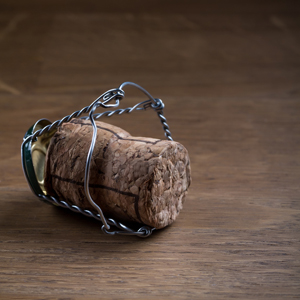The corks popped for one of South Africa’s oldest wine brands when Franschhoek winery Boschendal was named Overall Winner of the Amorim Tsogo Sun Méthode Cap Classique Challenge. During the awards luncheon at the Cullinan Hotel in Cape Town, Boschendal’s Boschendal Grande Cuvée Brut 2009 won the category for Best Vintage Brut as well as being named Overall Winner for the highest scoring wine. Boschendal winemaker Lizelle Gerber received a trophy for winning the Best Vintage Brut category and as overall winner was presented with a steel sabre, the traditional instrument used for opening sparkling wine bottles with the sabrage method.
This year was the 13th edition of South Africa’s foremost competition honouring producers of Cap Classique wines, with hotel group Tsogo Sun now joining the original sponsors Amorim Cork. With 102 entries, the 2013 Cap Classique Challenge attracted the most entries in the history of the competition to date.
Simonsig Wine Estate from Stellenbosch, a perennial star of the Amorim Tsogo Sun Cap Classique Challenge, won the Museum Class with its Simonsig Kaapse Vonkel Brut 2007. Graham Beck from Robertson outclassed the competition in the category for Rosé, winning both the Non-Vintage class (Graham Beck Brut Rosé Non-Vintage) as well as the Vintage category with its Graham Beck Brut Rosé 2009.
Joining Boschendal in flying the Cap Classique flag for Franschhoek, Colmant and Rickety Bridge dominated the Blanc de Blancs category. Colmant won the trophy for Best Blanc de Blancs Non-Vintage with the Colmant Brut Chardonnay Non-Vintage and Rickety Bridge led the Blanc de Blancs Vintage class with the Rickety Bridge Blanc de Blancs 2009. Colmant also won the category for Brut Non-Vintage with its Colmant Brut Non-Vintage.
Chairman of the judging panel, Cape Wine Master Allan Mullins, said that the judges unanimously agreed the standard of Cap Classique had reached a new level of excellence.
“The judges were unanimous in their praise of the category’s consistency and the excellence of many of the wines,” said Mullins. “I feel that this is due to newer producers gaining experience both in the cellar and in choosing cooler, more suitable vineyards for their grapes. Grapes for good MCC wines need to ripen as slowly as possible and must be harvested at the optimum time. MCCs made from grapes that are harvested too early will be lean and acidic and harvesting too late will result in dull and flabby wines,” Mullins said.
The most notable feature of the challenge was how well many of the MCCs had aged. “Wines in the Museum Class (open to wines older than 2008) and older examples in the Vintage Brut Class stood out for their complexity and depth of flavour,” he said. “This was in contrast to the earlier MCCs, whose vivacity and sparkle did not last much beyond two to three years.”
“It is clear that Cap Classique has come a long way since the formation of the MCC Association in 1992. This year’s overall quality was pleasingly high and there was proof that the better MCCs repay ageing, both on the lees and in the bottle. The Amorim Tsogo Sun Cap Classique Challenge has played – and continues to play – a major role in inspiring producers of this wonderful product to reach new heights.”
Joaquim Sa, MD of Amorim Cork South Africa, said the Cap Classique Challenge is continuing to evolve.
“This year we introduced winners for both the Vintage and Non-Vintage categories as Cap Classique was now reaching a level of sophistication and diversity that warranted this,” he said. “Science has also been brought into the judging progress. The Amorim Tsogo Sun Cap Classique Challenge is the first South African wine competition to refer wines suspected of being faulty to independent scientific analysis at Vinlab. This places our competition ahead of other shows, and such service is definitely needed in assisting producers in understanding the origins of wine-faults.”
Along with Mullins, this year’s judging panel included Neil Pendock, Jenny Ratcliffe-Wright CWM, Food24’s wine editor Cathy Marston, Giorgio Meletiou, and Jaume Gramona Marti from Spain.

